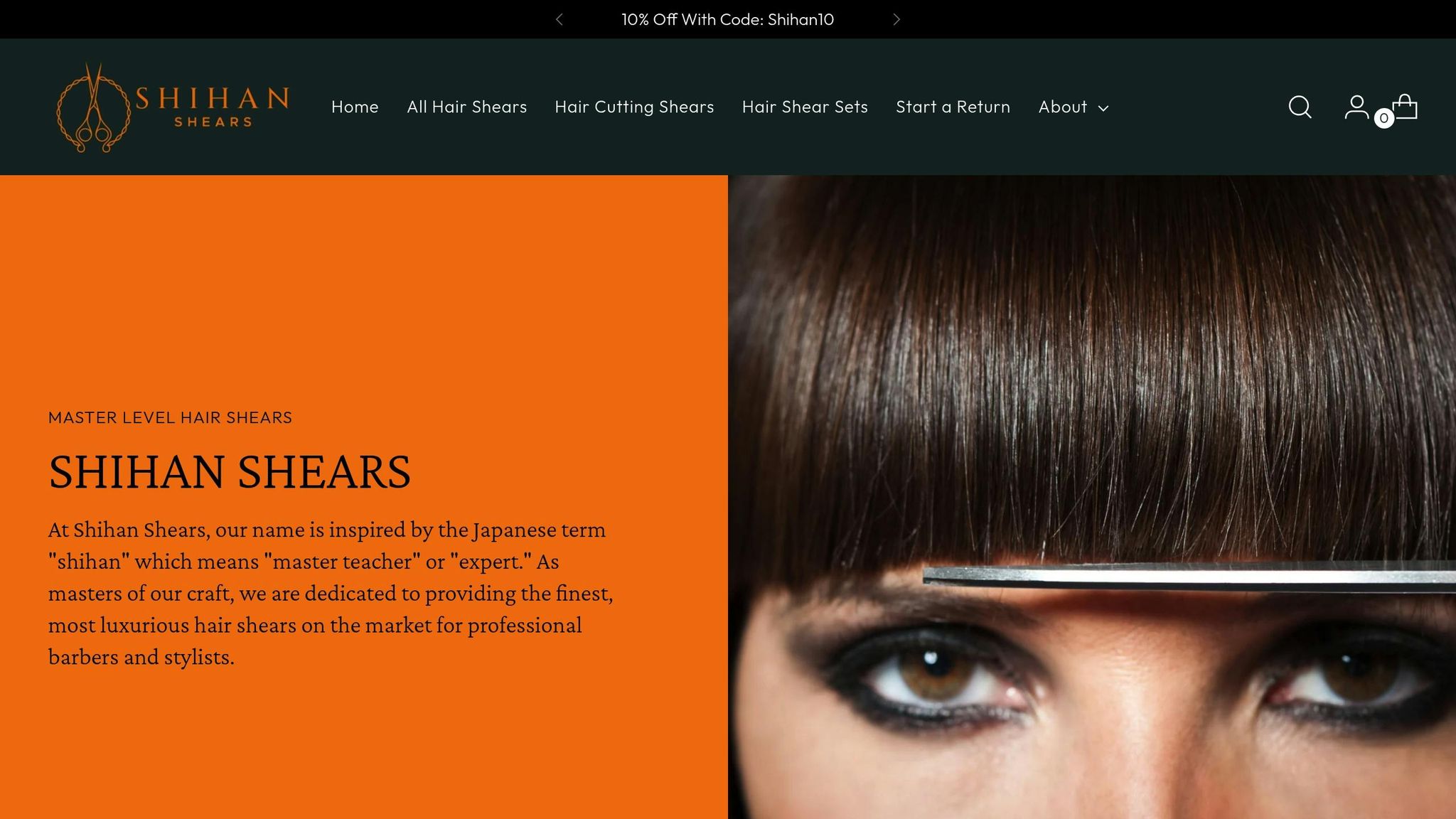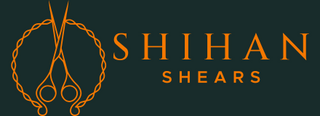Navigating the licensing requirements for barbers and cosmetologists can be confusing, but here’s the bottom line: while both professions require state-specific licenses, their training, tools, and career focus differ significantly.
- Barber Licensing: Focuses on men’s grooming services like haircuts, shaving, and beard care. Requires 1,000–1,500 training hours in most states.
- Cosmetology Licensing: Covers a broader range of services, including hair styling, skincare, nail care, and makeup. Training typically ranges from 1,600–2,000+ hours.
- Oversight: Many states regulate both professions under a single board, but rules and exams remain distinct.
- Tools: Barbers need basic cutting kits; cosmetologists require a more extensive toolkit for diverse services.
Key takeaway: Barbers can often start their careers sooner due to shorter training, while cosmetologists gain access to more varied opportunities. Both paths require ongoing education and high-quality tools to meet state standards.
Barber vs. Cosmetology in Kentucky: What’s the Real Difference?
Who Issues Licenses and Regulates Each Profession
The way states regulate barbers and cosmetologists isn’t one-size-fits-all. Each state has its own system for licensing and oversight, making it important for anyone entering these professions to understand who’s in charge.
State Licensing Boards by Profession
In many states, a single board manages both barbering and cosmetology. Take Tennessee, for instance. Back in 2014, the state formed the Tennessee Board of Cosmetology and Barber Examiners, merging previously separate boards. This unified board oversees a wide range of professionals, including cosmetologists, aestheticians, manicurists, natural hair stylists, eyelash specialists, and instructors. It also regulates master barbers, barber technicians, barber shops, barber schools, and barber instructors.
Alabama has a similar setup with its Board of Cosmetology and Barbering overseeing both professions.
In Tennessee’s case, the move toward unification combined two separate acts: one governing cosmetology (established in 1986) and another for barbering, which dates back to 1929. This merger aimed to simplify regulation and improve efficiency.
While unified boards streamline administration, the rules for barbers and cosmetologists still differ significantly.
Different Rules for Barbers vs. Cosmetologists
Even when regulated by the same board, the rules for barbers and cosmetologists reflect the unique nature of each profession. These regulations are designed to prioritize public health, safety, and welfare.
Education and Training Requirements
Licensing rules differ from state to state.
Age and Education Requirements
In most states, aspiring cosmetologists must be between 16 and 18 years old to qualify for licensing. The same age range generally applies to barbering programs. Additionally, candidates need to have a high school diploma or GED. Beyond these basics, the number of training hours and the specific course content distinguish the two career paths.
Training Hours and Course Content
Each state sets its own training requirements. Cosmetology programs cover a broad spectrum of skills, including hair care, skin treatments, nail services, chemical processes, makeup application, and spa techniques. In contrast, barber training hones in on skills like haircutting, styling, shaving, beard grooming, and mastering the straight razor - primarily focusing on men's grooming needs.
Exams and Application Process
To earn a license, you’ll need to pass both written and practical exams after finishing your training. The structure, content, and fees for these exams can differ depending on your profession and the requirements of your state’s licensing board.
Written and Practical Testing
Licensing exams typically test your knowledge of state regulations, hygiene, safety, and hands-on skills specific to your field. For instance, barber licensing exams might focus on traditional techniques, while cosmetology exams cover a wider range of services like skincare and hair styling. Since these requirements vary, it’s crucial to check with your local licensing board for the latest details. Fortunately, many states have made applying for licenses easier by offering digital processes.
Online Applications and Required Documents
After passing your exams, you’ll likely complete your licensing application online. Many state boards now provide digital portals where you can submit documents, pay fees, and track the status of your application. While the exact requirements depend on the state, you’ll generally need to provide:
- Proof of education, such as a high school diploma or GED, along with official transcripts
- Documentation showing you’ve completed the required training hours
- A valid government-issued photo ID
Additionally, some states require background checks, which may include fingerprinting. Because these requirements can differ, it’s essential to review your state licensing board’s guidelines to ensure you meet all the necessary criteria.
sbb-itb-a50b05d
License Renewal and State Transfers
Once you've earned your license, keeping it active and valid is essential. This means staying on top of renewal deadlines and meeting any state-required continuing education. The specifics depend on your state and whether you hold a barber or cosmetology license. If you're planning to move to a new state, you'll also need to navigate the transfer process, which comes with its own set of rules and requirements.
Renewal Periods and Continuing Education
Barber licenses need to be renewed regularly, with each state setting its own timeline and requirements. Part of this renewal process often includes completing continuing education courses. These courses typically cover topics like sanitation practices, updates to laws, and essential professional skills. For cosmetologists, the renewal process is similar but may involve more extensive education requirements due to the variety of services they provide, such as chemical treatments, skincare, and nail care. Fees and the availability of online course options vary depending on the state. Missing the renewal deadline could lead to penalties or even require you to go through reinstatement procedures.
Moving Your License Between States
If you're relocating to a new state, transferring your license involves understanding reciprocity agreements and state-specific rules. Barbers often find the process smoother since their training standards are more uniform across states. On the other hand, cosmetologists might need to complete additional coursework to meet the new state's requirements. The transfer process usually involves verifying your license, providing proof of training, and sometimes undergoing a background check. Many states offer temporary permits to allow you to work while your transfer is being processed. Additionally, some states provide faster processing times and reduced fees for military spouses, making the transition a bit easier for them.
Professional Tools and Licensing Standards
The tools you use as a barber or cosmetologist can make or break your ability to meet licensing standards and deliver top-notch service. Both professions require you to show proficiency with approved tools during licensing exams. Knowing what tools are required and investing in high-quality equipment lays the groundwork for a successful career.
Tool Requirements for Training and Exams
Most state licensing boards expect students to bring their own professional-grade tools to practical exams. For barber students, this typically means a basic kit that includes hair cutting shears, thinning shears, combs, clippers, and razors. These tools must meet strict safety and sanitation guidelines, with many states requiring stainless steel construction for easier sterilization.
Cosmetology students, on the other hand, have a more extensive list of required tools, reflecting the broader scope of their training. In addition to cutting tools, they need equipment for chemical treatments, nail care, and skincare services. While hair cutting and thinning shears are still essential, their toolkit is significantly larger - and often more expensive - than what barbers require.
State boards often set minimum quality standards for the tools used during exams. Using cheap or poorly made shears can lead to equipment failure during testing, which could jeopardize a student’s chances of passing. To help students prepare, many cosmetology and barber schools provide approved vendor lists to ensure compliance with exam standards.
The pressure of the practical exam environment can also test the limits of your tools. Students work under tight time constraints and are closely observed by examiners. Issues like dull or unbalanced shears can cause uneven cuts, hair pulling, or hand fatigue, all of which can negatively impact performance. These rigorous standards emphasize the importance of selecting tools that not only meet exam requirements but also support long-term professional use.
Quality Tools for Professional Standards: Shihan Shears

Once you’ve passed your exams, maintaining professional standards depends on having reliable, high-quality tools. Shihan Shears is a trusted name in the industry, offering equipment designed to help both barbers and cosmetologists achieve the precision and consistency their work demands. Made from premium Japanese steel, these shears deliver exceptional sharpness and durability.
Investing in quality shears not only ensures cleaner cuts but also reduces hand strain, which is critical for professionals who spend long hours cutting and styling. Precision is especially important when working with clients who expect polished results. The lifetime warranty provided by brands like Shihan Shears reflects their confidence in the durability of their products and offers long-term value for professionals.
For barbers, cutting and thinning shears are the most essential tools in their arsenal. The Shihan Shears Legacy Hair Shears Set, priced at $269.00, offers a comprehensive solution for most barbering needs. Cosmetologists, who often require multiple shear sets for different techniques, can benefit from options like the Red Moon Hair Shears Set, available for $274.95. This compact set is perfect for detailed work and precision cuts.
Regular inspections by state health departments ensure that tools meet sanitation standards and remain in excellent working condition. High-quality tools, like those from Shihan Shears, stand up to repeated sterilization and resist corrosion, making it easier for professionals to stay compliant with licensing requirements. Choosing professional-grade equipment not only helps you pass exams but also supports a successful, long-lasting career.
Summary of Key Differences
Let’s break down the main distinctions between barber and cosmetology licensing. These differences can help clarify your career path in the beauty industry.
Barber programs typically require 1,000–1,500 training hours, while cosmetology programs demand anywhere from 1,600 to over 2,000 hours. For example, in California, a complete barbering program requires 1,500 hours, whereas cosmetology programs start at 1,600 hours. Some specialized programs, like Georgia's Master Barber Apprentice program, can go up to 3,000 hours.
The licensing exams for the two fields also differ. Both professions require you to submit training documentation, pass written and practical exams, and pay the necessary fees. However, licensing fees and exam content vary by state. The table below highlights the key differences:
| Aspect | Barber Licensing | Cosmetology Licensing |
|---|---|---|
| Training Hours | 1,000–1,500 hours | 1,600–2,000+ hours |
| Program Duration | 9 months to 2 years | 12 to 24 months |
| Exam Focus | Men's grooming, shaving, beard care | Hair styling, nail care, skincare, makeup |
| Tool Requirements | Basic cutting kit with razors | Extensive toolkit for multiple services |
These differences not only shape the training process but also influence career timelines and earning potential. Barbers can often start working sooner due to shorter training requirements, while cosmetologists, with their broader skill set, may have access to a more diverse range of income opportunities. Both careers, however, require a commitment to license renewals and ongoing education.
No matter which path you choose, investing in quality tools is essential. Using professional-grade equipment, like the products from Shihan Shears, can make a significant difference in your career. Their tools offer precision, durability, and compliance with state sanitation standards, helping you maintain a successful and long-lasting career.
FAQs
What are the main career paths for barbers and cosmetologists, and how do these impact earning potential?
Barbers primarily concentrate on men's grooming, with career options that include working in barbershops, running their own businesses, or honing skills in specific areas like beard styling or precision haircuts. Their income often varies based on factors like whether they are self-employed, the size and loyalty of their client base, and their expertise in a particular niche.
Cosmetologists, on the other hand, have a wider array of paths to explore, including hairstyling, makeup artistry, skincare, nail care, and even owning a salon. This broader scope often opens doors to higher earning potential, especially for those who expand their skill set or venture into entrepreneurship. Both professions provide opportunities to increase income by specializing and cultivating a strong, loyal clientele.
How can barbers and cosmetologists transfer their licenses to another state, and what obstacles might they encounter?
Transferring a barber or cosmetology license to a different state typically involves obtaining a certification of licensure from your current state’s licensing board and submitting it to the board in the new state. Beyond that, you might need to meet additional criteria, such as completing a required number of training hours or passing specific exams.
One of the main hurdles is navigating the differences in state regulations. States often have varying education or experience requirements, and some may ask you to take extra tests. The process can also be time-consuming, often stretching over several weeks. Be prepared to provide additional documents as needed, and plan ahead to make the transition as seamless as possible.
Why should barbers and cosmetologists invest in high-quality tools, and how do these tools affect their work and licensing compliance?
Investing in top-tier tools is crucial for barbers and cosmetologists as it directly impacts the quality of their work. These tools allow for precise cuts, efficient styling, and safer practices, enabling professionals to deliver outstanding results. When clients leave satisfied, it not only boosts their confidence but also strengthens the professional’s reputation in a highly competitive industry.
Beyond performance, premium tools play a key role in meeting stringent safety and hygiene standards required for licensing. They help minimize risks of accidents or damage while ensuring compliance during regulatory inspections. By choosing professional-grade equipment, practitioners not only refine their skills but also stay aligned with industry requirements, keeping their licenses secure and their clients happy.

